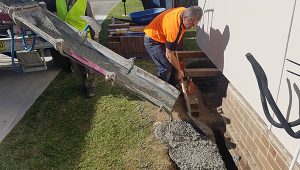Future Foundations: The Amazing Evolution of Underpinning Techniques
The underpinning for house is crucial in the complex world of construction and civil engineering. It symbolizes the architectural quest for safety and durability. As old as the structures it supports, underpinning has evolved from rudimentary processes to modern ones. This metamorphosis is not just a building story but a testament to our inventiveness and our constant relationship with nature.

Their underpinning dates back to when structures were vulnerable to the elements and their builders’ understanding. The traditional method of propping up buildings with wood, stone, or brick was simple yet effective. Though primitive by modern standards, this method provided the groundwork for the underlying process, representing the basic need to protect and maintain our living areas.
As decades passed, underpinnings evolved alongside human advancement. The innovative Industrial Revolution brought new materials and methods. Iron and steel beams replaced timber and stone beams as the strongest and most durable. The “pit method,” inspired by innovation and bravery, was more systematic than its predecessors but still relied on manual labor and the ground below.
Concrete revolutionized underpinning and construction. The development of mass concrete underpinning in the 20th century revolutionized strength and durability. While effective, digging areas beneath the foundation and pouring concrete in phases was time-consuming and disruptive.
The evolution of underpinnings is best shown by the switch from conventional to modern approaches. The late 20th and early 21st century technology renaissance brought precision, efficiency, and minimal intrusion. Mini-piling can reach deeper into the earth’s strata, solving urban density and complex soil problems. Resins and grouts in chemical underpinning have transformed the sector by stabilizing soil without excavation.
This path from primitive to polished is about human adaptation and technical advancement. They are underpinning advances from a higher understanding of geology, engineering, and nature-architecture harmony. Modern methods emphasize sustainability, efficiency, and minimal environmental impact, reflecting our changing values and increased consciousness.
